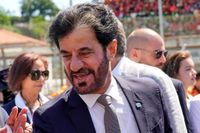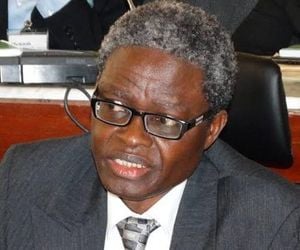The Formula 1 world is buzzing with innovation, inspiration, and a touch of nostalgia as the 2025 season speeds toward its dramatic conclusion. From cutting-edge virtual reality experiences and historic broadcast deals to empowering partnerships and heartfelt stories from the paddock, there’s no shortage of action both on and off the track. Let’s take a closer look at the latest developments that are shaping the sport’s present—and its future.
On October 9, 2025, BOSS, the renowned German fashion label, unveiled a virtual reality experience in partnership with the Aston Martin Aramco Formula One Team. Powered by Apple’s Vision Pro, this immersive adventure is now available at BOSS flagship stores in London, Paris, Düsseldorf, Barcelona, Las Vegas, Dubai, and Singapore. Fans can step into the world of Formula 1 like never before, thanks to a blend of interactive racing challenges, three-dimensional puzzle games, and a jaw-dropping cockpit simulation of the AMR25 race car.
With Aston Martin drivers Fernando Alonso and Lance Stroll front and center, the BOSS x Aston Martin F1 VR experience kicks off with games designed to sharpen your focus—a crucial skill in the high-stakes world of motorsport. Then, you’re whisked away to the heart of the action, sliding into the cockpit for a virtual lap that’s as close to the real thing as most fans will ever get. The visuals are sleek, the challenges are fast-paced, and the adrenaline is all too real. As BOSS puts it, this is about putting you "in the driver’s seat." If you’re near one of the participating cities, it’s well worth a pit stop.
But that’s not the only way Formula 1 is bringing fans closer to the action. In a move that’s as sweet as it is historic, the Las Vegas Grand Prix—scheduled for November 20-22—will feature Girl Scout Cookies for sale inside the official fan zone and the F1 Paddock. This marks the first time ever that the iconic cookies are available at a Formula 1 event, thanks to a new partnership between the Girl Scouts of Southern Nevada and the Grand Prix organizers.
For the Girl Scouts, this isn’t just about cookies. Scouts will get exclusive behind-the-scenes tours and meet-and-greet opportunities with F1 Academy drivers, giving them a firsthand look at the people and technology that power the world’s fastest sport. Kimberly Trueba, CEO of the local Girl Scouts chapter, shared her excitement: "Not only will this partnership strengthen their entrepreneurial skills, but it will also expose them to careers in the motorsports industry. This is truly an experience of a lifetime for our girls, and we are excited to be highlighting the impact that Girl Scouts makes on this global stage."
Emily Prazer, president and CEO of the Las Vegas Grand Prix, echoed those sentiments: "This partnership is about opening doors and expanding possibilities. We're proud to celebrate an organization that inspires young women to dream big and shows that there's space for everyone in the fast lane." It’s a bold step toward promoting STEM education and entrepreneurial skills, all while giving fans a tasty treat during race weekend.
Behind the scenes, the business of Formula 1 is also shifting gears. Rumors are swirling that Apple is on the cusp of securing the United States broadcasting rights for Formula 1, starting in 2026. According to recent reports, Apple is willing to pay around $140 million per season—significantly more than the $90 million currently paid by ESPN. The deal could be announced as soon as the next race at the Circuit of the Americas in Austin, Texas, which is the second of three American stops on this year’s calendar.
If finalized, ESPN would finish out the 2025 season before handing over the reins to Apple. What’s not yet clear is whether Apple will hold exclusive rights or if Formula 1’s own F1 TV platform will continue to operate alongside the tech giant’s coverage. Either way, the move underscores Formula 1’s growing investment in the U.S. market—a trend also reflected in the box office success of "F1: The Movie," co-produced by Lewis Hamilton and starring Brad Pitt and Damson Idris. The film, released in June, has become Brad Pitt’s highest-grossing movie to date, further fueling the sport’s American expansion.
Meanwhile, leadership at the very top of motorsport’s governing body appears set for continuity. Reports indicate that Mohammed Ben Sulayem is likely to be re-elected unopposed as president of the FIA, which oversees Formula 1. The reason? The FIA’s candidate list shows no viable challengers able to assemble the required team—particularly due to a lack of eligible South American vice-presidential candidates, aside from Fabiana Ecclestone, who is already part of Ben Sulayem’s team. The FIA general assembly will meet in Uzbekistan this December to confirm the outcome, but unless a late twist emerges, Ben Sulayem, who has served since 2021, is set for a second four-year term. His tenure hasn’t been without controversy, including disagreements with some F1 drivers over the FIA’s stance on swearing and notable staff turnover. Still, his leadership looks poised to continue into 2026 and beyond.
On the track, creativity and science are colliding in the most personal of ways. Racing Bulls rookie Isack Hadjar has turned heads—not just for his impressive performances, but for his striking helmet design. Inspired by physics equations and crafted with help from his father Yassine, a quantum physicist, Hadjar’s helmet features the likes of Einstein’s E=mc², Newton’s laws, and Bernoulli’s equation—a direct nod to the aerodynamics that keep F1 cars glued to the tarmac.
"I have always considered physics equations to be works of art," Yassine explained. The helmet also sports a galaxy on the back and an atom on top, with an electron circling Hadjar’s racing number. For Isack, the design is deeply personal: "The message for Isack, conveyed through this design, is that thanks to physicists, we understand how our world works… Hence, the importance of studying at school and with engineers to understand how his F1 car behaves. Indeed, the driver is the most important sensor in the car."
Hadjar, now 21, is enjoying an impressive rookie season, having scored a podium at the Dutch Grand Prix and currently sitting ninth in the driver standings. His journey began at age five in go-karts, with his father as his first mechanic and mentor. "The only limit is the universe… this is why you see it on the top of the helmet," Yassine said. It’s a story that beautifully blends family, science, and the relentless pursuit of speed.
As Formula 1 continues to evolve—embracing new technology, fostering inclusivity, and celebrating both tradition and innovation—the sport remains as thrilling as ever. Whether you’re donning a VR headset, savoring a cookie trackside, or marveling at the science behind a rookie’s helmet, there’s no doubt: the future of F1 is racing toward us at full throttle.






